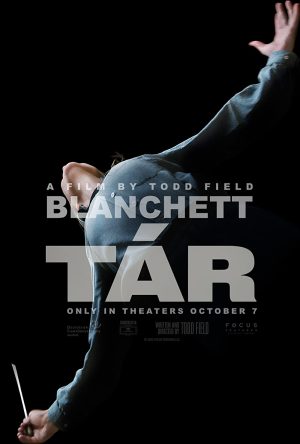‘She Said’ Gives Victims a Voice
The true story behind the New York Times article that inspired the #MeToo movement
HIROKO MASUIKE VIA REDUX
“Spotlight” film “She Said” was featured at the New York Film Festival at Lincoln Center.
November 1, 2022
Trigger Warning: This article includes mentions of sexual assault and rape
The New York Film Festival has once again visited Lincoln Center this October with a stellar lineup of “Main Slate” and “Spotlight” films from around the world, revival works, and talks with movie makers — all of which are slated to be highly acclaimed upon their release. Even in its 60th year, the festival remains a renowned space for directors and filmmakers to debut and celebrate their newest works, one of which is the “Spotlight” film “She Said.”
Directed by Maria Schrader, “She Said” is based on the autobiographical novel of the same name written by Jodi Kantor and Megan Twohey, two New York Times (NYT) investigative journalists. Kantor and Twohey unveiled Harvey Weinstein’s extensive sexual misconduct and the systematic abuse in Hollywood, which helped to ignite the #MeToo movement.
The movie delves into the challenges that Kantor and Twohey faced while trying to investigate Weinstein’s history, including unwillingness from the victims to talk, nondisclosure agreements, legal loopholes, and attempted interference from Weinstein himself.
Weinstein is a former film producer, known for movies such as “Pulp Fiction,” “Shakespeare In Love,” and “Good Will Hunting.” Alongside his brother, he co-founded the entertainment company Miramax. Before the sexual assault allegations against him came to light, he was a huge name in the film industry, with an exorbitant amount of power in Hollywood. That was the reason so many of the women Kantor and Twohey interviewed refused to be quoted in the article — Weinstein had the ability to blacklist them in Hollywood, which he did to the women who rejected his advances.
The film is led by Carey Mulligan and Zoe Kazan as Twohey and Kantor, respectively. Joining them in the supporting cast are Patricia Clarkson, Andre Braugher, Jennifer Ehle, and Ashley Judd. Similar to other journalism movies, such as “All The President’s Men” and “Spotlight” (which “She Said” is compared to on the New York Film Festival’s own website), the film tells the facts of the story without much dramatization.
I know nothing about cinematography, so I cannot touch upon that aspect of the movie — though it all seemed pretty incredible to me — but I can express the importance of this movie and why this story absolutely needed to be brought to the big screen.
Within the first 20 minutes of the movie, we see the aftermath of an NYT article written by Twohey exposing the accusation of sexual assault against former president Donald Trump — just months before his victory in the 2016 election.
The most powerful aspect of this movie is that Weinstein does not appear once. We hear his voice over the phone, and the most we see of him is the back of his head — and even that is overshadowed as the camera pans right past him to a close-up of Twohey’s face.
Instead, the microphone is handed to the collective “she” in “She Said”: the women who were victimized by Weinstein. This is evident from the opening scene of the movie, in which the first thing the audience sees is a young Laura Madden (Ehle), a former employee of Weinstein, in Ireland in 1992 excitedly working on a movie set, until the scene suddenly cuts to her running down the street sobbing as she carries some of her clothes in her arms.
The women that Twohey and Kantor interview each get a chance to talk about their experience with Weinstein and what he did to them, accompanied by flashbacks of their younger selves and haunting shots that linger on empty hotel rooms as they speak. “She Said” is about the victims and telling their stories.
The film does not shy away from the horrors women encounter in terms of threats and sexual harassment in day-to-day life. Within the first 20 minutes of the movie, we see the aftermath of an NYT article written by Twohey exposing the accusation of sexual assault against former president Donald Trump — just months before his victory in the 2016 election. In this article, 10 women are directly quoted and over 50 were interviewed. The movie shows one of the women who went on the record, as well as Twohey, facing continuous harassment because of their involvement in the article. The woman, who cannot leave her house due to press stakeout, is sent an envelope of feces. Twohey receives a threatening phone call: “I am going to rape you, murder you, and throw your body into the Hudson,” the caller says, then promptly hangs up.
Following the exposé by Twohey and Kantor and their encouragment of women to speak out, in 2020 Weinstein was found guilty of first-degree criminal sexual assault, third-degree rape, and two counts of predatory sexual assault. He is currently serving out his 23-year sentence.
The epilogue of “She Said” notes that, in the month following the release of the article, 82 more women came out against Weinstein. He was fired from his own company less than one week after the charges were unveiled. A NYT article wrote that “a national reckoning is underway.”
In “She Said,” a common motif is the fact that no woman wants to “jump alone,” but the #MeToo movement has provided women — and anyone who has ever been sexually harassed — with a support system of others who have gone through the same thing. As a society, we are working to remove the stigma behind being a survivor of abuse and shift the blame from the victims to the abusers.
“She Said” comes out in theaters on Nov. 18 and I cannot recommend seeing it enough. Will you go on the record?















